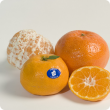Crops
The Department of Primary Industries and Regional Development continues to support the growth and international competitiveness of all crop industries in Western Australia.
With a 2400 kilometre span from its tropical north to its temperate south, WA supports a broad range of cropping industries from rain-fed winter cereals through to irrigated horticultural crops.
In the 2012/13 year the WA cropping industries exported a total of $3.9 billion which comprised: $3.1 billion of cereals, $859 million of pulses, pastures and oilseeds, $142 million of horticultural crops. The major contributors to these exports were wheat ($2.7 billion), canola ($756 million), barley ($377 million), lupins ($42 million), carrots at $48 million, oats ($12 million), and strawberries at $5.5 million.
Articles
Filter by search
Filter by topic
- (-) Remove Production & postharvest filter Production & postharvest
- Horticulture (9) Apply Horticulture filter
- (-) Remove Fruit filter Fruit
- (-) Remove Breeding & varieties filter Breeding & varieties
- Mangoes (3) Apply Mangoes filter
- Citrus (3) Apply Citrus filter
- Pome fruit (1) Apply Pome fruit filter
- Bananas (1) Apply Bananas filter
- Avocados (1) Apply Avocados filter








